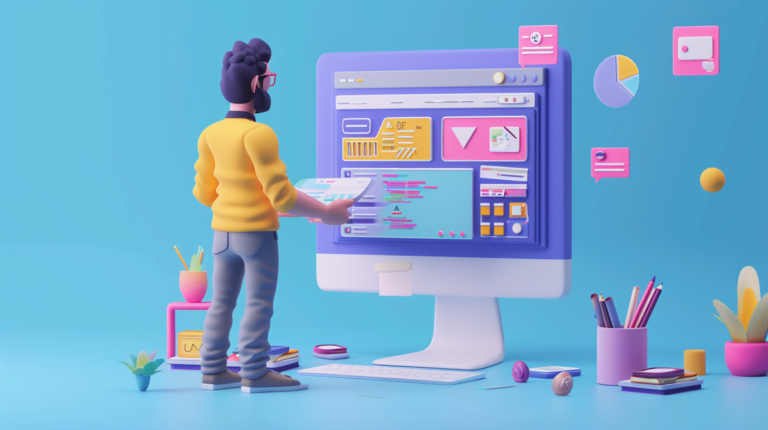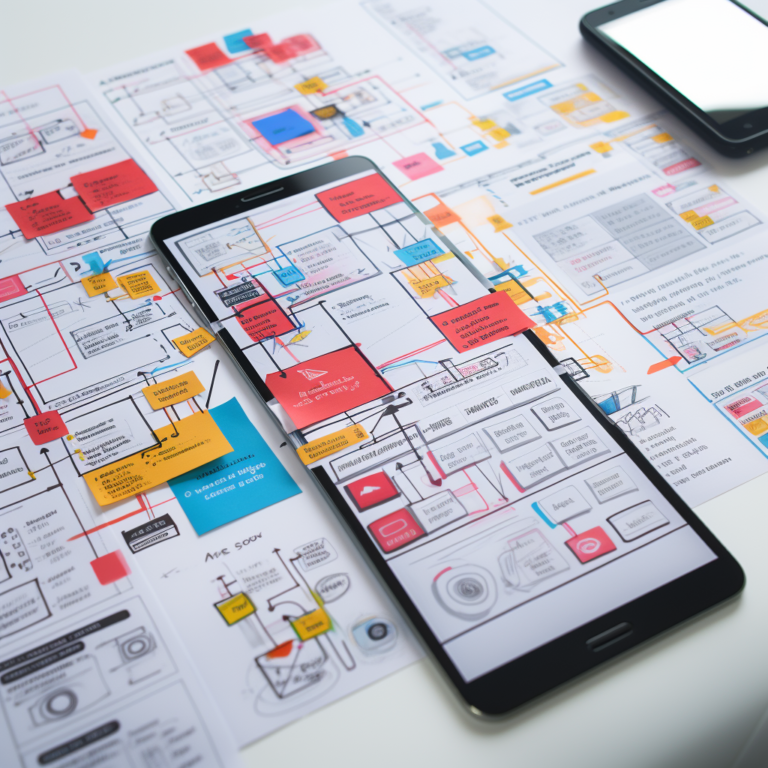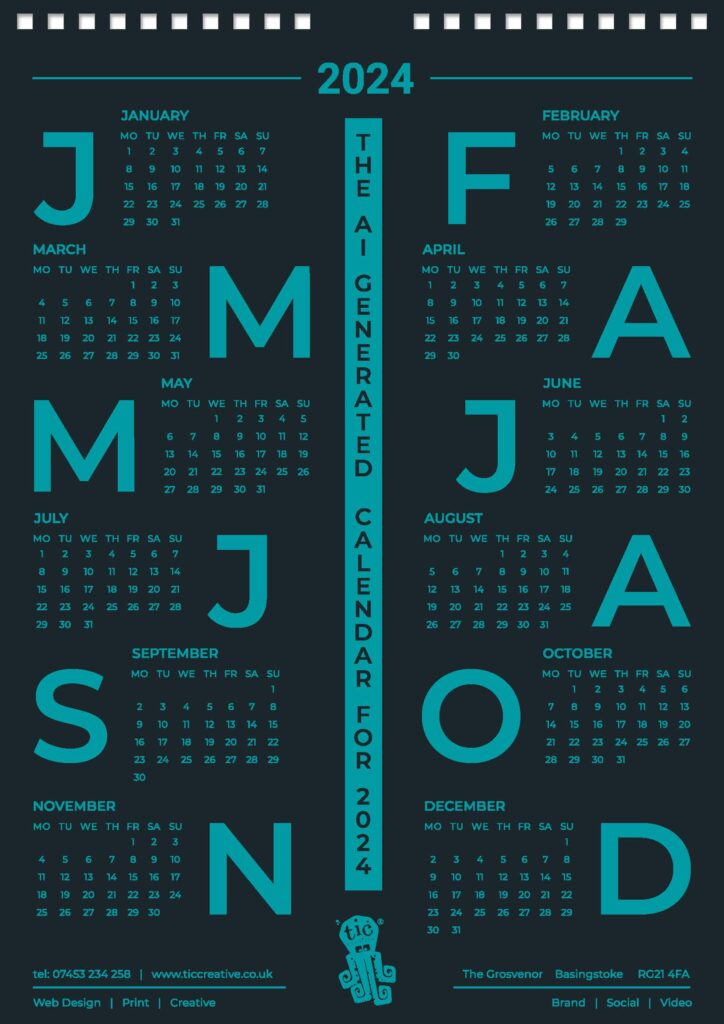
B2B Website Design
A B2B website stands as the linchpin of your team’s efforts, tirelessly working to transform prospects into loyal customers. In the realm of business-to-business (B2B) interactions, a website does more than just occupy digital space; it significantly enhances marketing strategies, highlights your position as a thought leader, and showcases your organisational strengths. To craft a B2B website that truly resonates with your intended audience, it’s imperative to navigate the complex web of stakeholder interests while keeping the focus squarely on the user experience. The most exemplary B2B websites embody this principle of user-centrism, deliberately placing the needs and experiences of customers at the forefront of their design philosophy.
Engaging your audience on a deeper level requires an intimate understanding of their unique desires, requirements, and obstacles. By concentrating on these elements, you can design a website journey that not only captures the interest of your visitors but also fosters impactful interactions leading to tangible conversions. This approach ensures your website acts as a dynamic tool in your arsenal, not just attracting visitors but converting them into active participants in your business narrative.
In the following sections, we’ll explore the strategies and insights necessary to develop a B2B website that not only meets but anticipates the needs of your target audience. You’ll learn how to create an online presence that is not just compelling and visually appealing but also strategically aligned with your conversion goals. From understanding your audience’s perspective to implementing design elements that facilitate a seamless user experience, we’ll guide you through the essentials of crafting a B2B website that stands out in today’s competitive digital landscape.
The Critical Role of Web Design in B2B Enterprises
In the intricate world of business interactions, the distinction between B2B (business-to-business) and B2C (business-to-consumer) websites is marked by their core objectives. B2B websites are primarily engineered to nurture long-standing relationships rather than focusing solely on instantaneous sales. They often represent the initial interaction with potential clients, placing a premium on design that transcends mere visual appeal. In this context, the design of a B2B website emerges as an indispensable component of B2B marketing strategies, serving as a foundational pillar for fostering user trust and engagement.
A meticulously designed B2B website does more than just present your value proposition and products; it becomes a conduit for disseminating high-quality content that resonates with your target audience. This amalgamation of elements conveys a compelling brand narrative that not only engenders trust but also sets the stage for enduring business relationships. In the fiercely competitive B2B arena, where making a memorable first impression can significantly impact your business prospects, investing in superior web design is not just beneficial but essential for standing out and forging robust business connections.
Strategies for Crafting an Effective B2B Web Design
Developing a potent B2B web design strategy is an exercise in precision and strategic foresight. Here is an expanded guide filled with actionable insights to aid you in creating a website that is not only aligned with user expectations but also aesthetically pleasing and operationally sound.
Establishing Clear Objectives and Defining Performance Metrics
Embark on your web design journey by delineating clear, strategic objectives, such as enhancing brand visibility or driving an uptick in site traffic. These goals will serve as the blueprint for your website’s design and functionality, ensuring every component contributes to your overarching business aims.
Identify specific user actions that align with these objectives. For instance, a Software as a Service (SaaS) entity might encourage prospects to register for a product demo, directly fostering customer engagement and supporting goals related to product adoption or sales enhancement. Conversely, a consultancy might aim to gather contact details for nurturing leads, thus facilitating direct communication and fostering client relationships.
Selecting the right Key Performance Indicators (KPIs) is crucial for monitoring these actions’ effectiveness and their contribution to your primary objectives. If bolstering engagement with your sales team is a goal, metrics such as email sign-ups and form submissions are pivotal, providing valuable insights into your site’s capacity to convert visitors into leads.
Key KPIs to Consider Include:
- Pageviews: Serve as a gauge for brand awareness and traffic.
- Time Spent on Site: Indicates user engagement and the relevance of your content.
- Email Sign-ups: Reflects sustained interest in your brand, offerings, or insights.
These metrics, among others, are instrumental in assessing the impact of your web design on your business goals, allowing you to refine your strategy for maximum efficacy. By integrating these strategic elements, you can craft a B2B website that not only captivates and engages your target audience but also drives meaningful business outcomes.
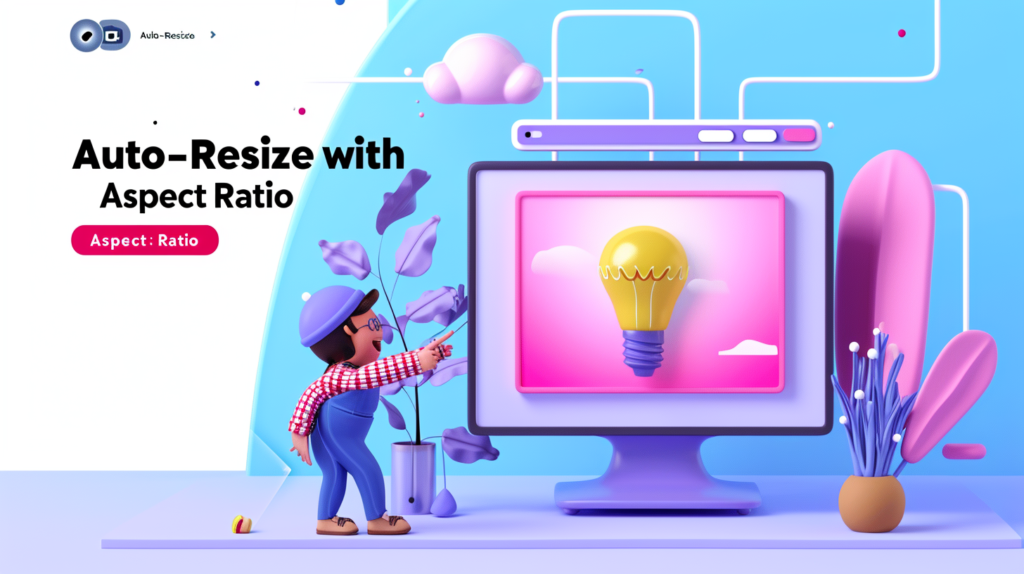
Optimizing the Buyer Journey for B2B Success
Upon establishing your objectives and setting up a system to monitor progress, the next critical step involves mapping out your buyer’s journey to significantly enhance your conversion opportunities. This stage is pivotal and demands conducting thorough user research, crafting detailed buyer personas, and gaining a comprehensive understanding of the B2B purchasing process, which is inherently more complex than its B2C counterpart.
1. Deciphering the B2B Buying Process
The journey of a B2B buyer diverges significantly from that of a B2C consumer, often involving a more layered and intricate decision-making process. As highlighted by industry experts such as Gartner, a typical complex B2B solution purchase involves between six to ten decision-makers, each with their unique concerns and criteria, making the buying journey far from linear. In many cases, the challenge lies not only in appealing to the individual site visitor but also to their supervisors and beyond, necessitating a web experience that captivates the initial user while simultaneously catering to the broader decision-making unit.
Given the multifaceted nature of this process, which may require several site visits to culminate in a conversion and spans an average of 102 days, it’s crucial to understand these dynamics thoroughly. By identifying key stakeholders early and presenting essential information prominently, your site can address the specific needs and considerations unique to B2B transactions, thereby smoothing the path to conversion.
2. Implementing User Research
Effective user research is foundational in developing a deep, data-driven comprehension of your customers, enabling the creation of websites that genuinely resonate with their requirements rather than resting on assumptions.
To conduct meaningful user research, consider the following approaches:
- Survey Insights: Prior to embarking on the web design process, delve into customer surveys to garner firsthand insights into their preferences, expectations, and experiences. This direct feedback is invaluable for tailoring your site’s design and content to better meet user needs.
- Analyzing User Interactions: Pay close attention to the feedback obtained through various communication channels, including in-person discussions, email communications, and social media interactions. User testimonials, in particular, are a goldmine of information, offering insights into how customers perceive your products and website. These perspectives are crucial for informing enhancements to the user experience (UX) and overall design strategy.
- Exploring Search Trends: Investigate the search queries and keywords your customers use within your site’s search function. This analysis can shed light on user intent and preferred terminology, guiding improvements to your site’s navigation and content organization to better match user search patterns, thus elevating the UX by ensuring users can effortlessly find the information or products they seek.
Armed with a nuanced understanding of your customer base, you can craft a website that not only effectively bridges the gap between your customers’ needs and your company’s offerings but also enhances content relevance and user engagement. This tailored approach, informed by a thorough understanding of common goals and pain points across different user segments, fosters a superior user experience that is meticulously aligned with user expectations.
3. Crafting Buyer Personas for Precision Targeting
Identifying groups of users with shared objectives allows you to construct buyer personas—comprehensive profiles that represent your ideal customers in vivid detail. Instead of adopting a broad strategy aimed at all procurement professionals, for instance, you could conceive a specific marketing persona like “Paula Procurement.” Utilize the insights gained from your user research to flesh out this persona with demographic details, including common geographic locations and age brackets. Moreover, integrate their key challenges, aspirations, and preferred methods of communication.
These refined buyer personas enable you to customize your website’s experience for the segments most likely to engage and convert. Personalization strategies might include localizing content or adapting the layout of your homepage to accommodate right-to-left reading patterns for audiences from Arabic or Hebrew-speaking regions. By aligning your website’s content and messaging with the interests and preferences of each persona, you significantly enhance engagement and, consequently, your chances of conversion.
Streamlining Brand Consistency and Messaging
Employing a unified design system is instrumental in crafting a cohesive, brand-aligned website, ensuring uniformity across all digital touchpoints. This coherence is vital in avoiding potential customer confusion.
A design system offers a cohesive visual language, encapsulating reusable design elements, standards, and guidelines that promote consistency in product and web design. Such a framework not only breaks down barriers between design, development, and marketing teams but also expedites the web development process.
With ready-to-use design components, your team can dedicate more effort to customization and innovation, bypassing the need to design basic elements from scratch for every project. Since these components are pre-tested and standardized, their application reinforces brand consistency, delivering a seamless user experience (UX).
To develop a design system, begin with an audit of your current designs and products to identify brand-congruent visual elements and any inconsistencies. This review sets the stage for defining your design language, which should encapsulate the emotions you aim to evoke in your customers and guide the selection of visual elements such as color schemes, typography, and imagery.
After establishing your design language, compile a pattern library of common design elements. Enhance this library with comprehensive documentation or style guides that detail their application and upkeep. This documentation is crucial for ensuring your team applies the design system effectively and consistently across your website and other digital platforms.

Enhancing Site Usability and User Experience
Maximizing your site’s effectiveness necessitates a focus on user-friendliness. Here are strategies to prime your site for higher conversion rates through improved UX:
- Implement Intuitive Layouts: Let customer research inform your site’s structure, ensuring it quickly addresses users’ primary concerns and guides them towards your solutions. For example, if research indicates a prevalent demand for pricing information, make pricing details readily accessible from the homepage.
- Reduce Navigation Clicks: Streamline your site’s architecture to minimize the clicks required for users to reach their intended destinations. If the Services page is a frequent target, incorporate a direct link to this page on your homepage, facilitating a smoother user journey.
- Incorporate SEO Fundamentals: Build your website and its content with SEO principles in mind. Ensure all elements, from headings to image alt texts, are optimized to boost your search engine rankings and visibility. Conduct keyword research to integrate relevant search terms strategically, attracting more organic traffic.
- Optimize for Conversion: Enhance the conversion process by addressing user needs and removing obstacles in their navigation path. If analytics suggest hesitation on the pricing page, simplify the content and include positive testimonials to ease decision-making and encourage faster conversions.
- Prioritize Accessibility: Design your site to be accessible to all users, adhering to accessibility guidelines. This not only improves the UX for everyone but also ensures your site is responsive across all devices, expanding your reach and providing a positive experience for every visitor.
- Ensuring Excellence in Launch and Sustained Success
- Achieving a seamless website launch and ensuring its continued success demands a rigorous approach to pre-launch testing, coupled with consistent post-launch evaluations. A website that is both aesthetically pleasing and functional will not only satisfy your customers but also significantly elevate your brand’s perception in the marketplace.
- Customer tolerance for subpar web experiences—be it due to glitches, slow load times, or navigational issues—is minimal. Research by Kissmetrics underscores the critical nature of website performance, noting that even a one-second delay in page response can precipitate a 7% drop in conversions. Such hindrances to a smooth user experience are unacceptable, especially on launch day.
- To optimize your customer’s experience from the outset, a thorough pre-launch review and testing phase is indispensable. This phase should encompass:
- Design Element Inspection: Scrutinize your website for any visual discrepancies or errors that could detract from the user experience.
- Content Proofreading: Rigorously check all written content for errors, ensuring clarity, coherence, and engagement.
- Functionality Testing: Assess the performance of integrations, widgets, downloadable content, and forms for functionality.
- Link Verification: Examine all internal and external links to rectify any issues related to broken links or improper redirects.
- Cross-Browser and Device Testing: Ensure your website delivers a uniformly excellent experience across various browsers and devices, accommodating the diverse tech landscape of your audience.
- Page Speed Evaluation: Confirm that your site loads efficiently to cater to users who value speed and are likely to abandon slow-loading pages.
While meticulous pre-launch testing sets the foundation for a successful debut, the commitment to excellence doesn’t end with the site going live. Implement a routine of scheduled post-launch reviews to proactively spot and resolve any issues—be it newly developed bugs, broken links, or content errors—that could impair the user experience.
Embracing a Design-First Approach for B2B Websites
Crafting a B2B website that effectively converts prospects into customers demands a thoughtful, user-centric design approach. By prioritizing the needs, preferences, and pain points of your target audience throughout the design process, you cultivate an environment that not only welcomes potential buyers but also guides them towards discovering solutions with ease.
This user-focused methodology is instrumental in fostering impactful user experiences that catalyze growth, build trust, and cement lasting customer relationships. Leveraging a platform like Webflow for your B2B website construction offers unparalleled power and flexibility, enabling you to continuously refine and enhance the user experience through a visually intuitive interface.
By integrating these strategies—rigorous testing, continuous improvement, and a design-first ethos—you lay the groundwork for a B2B website that not only meets but exceeds the expectations of your audience, ensuring your online presence is as dynamic and effective as the solutions your business offers.


